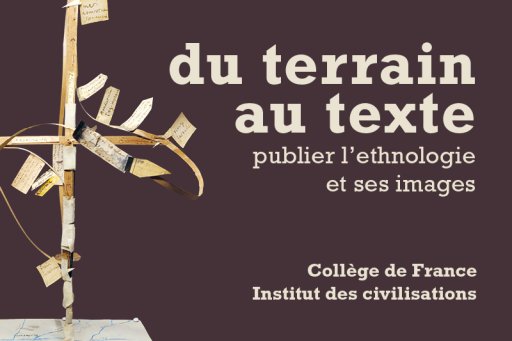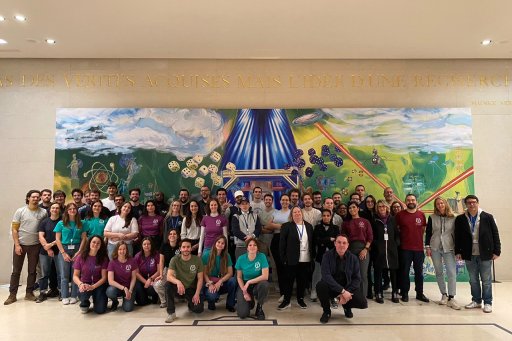![[alt_0c319a65-4263-4db0-9de6-2d8f39731e09]](/media/chercheurs/UPL1959744363884525753_Brice_Bakkali_Hassani.jpg)
Did your interest in the physical sciences stem from a desire to better understand how matter works ?
Initially, I had a taste for and an aptitude for mathematics. In 2012, I graduated from the Bac S in Bordeaux, and then entered a mathematics and physics preparatory class. I didn't know how the grandes écoles worked. I went into it " blind ", with the only real motivation being the intellectual challenge of practicing mathematics at a higher level. During my preparatory classes, I became a little more interested in physics, which - might we say - builds bridges between the description of reality and mathematics. Then, in 2014, I passed the entrance exam to the École polytechnique. At the time, quantum mechanics was still rarely taught in high schools and preparatory classes. During the summer vacations, I came across a quantum mechanics book on the Internet, written by professors at the École polytechnique. It was a revelation ! I could see the immensity of this field, its incredible mathematical richness, and its capacity to describe the most bizarre properties of matter, the most contrary to our intuitions, the most spectacular too. I saw it as a challenge to reason against itself. I devoured this lecture book before the start of the school year ! By the time I got to the École Polytechnique, I knew I wanted to do research in physics... without fully understanding what that meant. It was a kind of fantasy !
Today, how would you describe your daily life as a researcher ?
My research in experimental quantum physics imposes a certain routine. I work in a room the size of a large office. In this room, a vacuum chamber and optical instruments are set up on tables, all controlled by computers. I run thirty-second experimental cycles. Inside the hermetically sealed chamber, a sample of metal is heated, and a gas - a collection of atoms far apart from each other - rises from the metal. The enclosure in which this gas spreads is equipped with transparent walls, and laser beams introduced into the enclosure are used to constrain the movement of the atoms in the gas. I then trigger a computer photograph of the gas to immortalize its state. This will destroy the cloud. Then, depending on the conditions of the experiment, I can interpret the observations.
![[alt_f452769f-4cac-4d51-82d7-3bc60100ff29]](/media/chercheurs/UPL8635011822303996325_Enceinte_exp__rience_physique.jpg)
Alongside me are a doctoral student, a PhD student and a post-doctoral fellow dedicated to this project. This is why we use an electronic laboratory notebook in which we record our daily research. So, every day starts with setting up the experiment, reading the lab notebook and consulting articles from colleagues around the world on the arXiv.org website (which offers free access to millions of articles in physics, mathematics and computer science that have not yet been published in journals). Every day, three to ten new articles are available in my field of research.
To what extent is your work a " teamwork " ?
There's a real interdependence between the researchers in my laboratory. On a daily basis, we take stock of our progress, our calculations, etc. One of the special features of my field is that, as a result of this collaborative work over several years, the thesis manuscript is the link between the last and the new PhD student. It contains all the projects in which the PhD student has participated, whether or not he or she was the leader. The experiment we're working on was initiated seven years ago by Jérôme Beugnon and Jean Dalibard. They are the bridge-builders between generations of doctoral students. Our theses are, in a way, the laboratory's annual reports on the research carried out on the experiment.
What are you trying to understand about atoms ?
Atoms are the elementary building blocks of ordinary matter, and their individual properties have been fairly well known and systematically studied since the mid-19th century. I study the collective properties of assemblies of atoms. I conduct experiments in which atoms, once cooled but still in gaseous form, move in only one plane, the horizontal plane. I wedge the quantum gas between two walls of light. The atoms then behave like balls on a billiard table, quantum balls... I'm interested in the consequences of this planar motion (combined with the interactions between atoms) on the properties of the system.
Why did you choose to study one type of atom rather than another ?
Our group is involved in fundamental research. We're not aiming for a technological application. We're exploring what's going on in quantum gases... and we hope it will be of scientific interest. Practical spin-offs are a bonus ! The nature of the atoms used in my experiments is therefore disconnected from any application. In concrete terms, I'm concentrating on the rubidium atom, because it resembles the simplest atom imaginable (the hydrogen atom) and we know its behavior well. I prepare assemblies of rubidium atoms in the form of a sheet ! And I'm studying their properties, such as, for example, the appearance of a property called " superfluidity ", which corresponds to the disappearance of viscosity in flows.
You're about to submit your thesis. How do you see your future ?
Ideally, I'd like to continue in research. Unfortunately, the material and intellectual conditions for completing a thesis at the Collège de France are exceptional ! It's quite difficult to get a research post in France. All options are open to me, and I'm also considering moving abroad.
I also really enjoy lectures. I was lucky enough, thanks to my doctoral contract, to be able to give lectures in experimental physics at Jussieu. It's a real pleasure to come face to face with students' reactions of incomprehension, and your own doubts. It's a real challenge to have to modify what you say until it's understood. It forces me to reconsider my past blockages. I proceed with my students by trial and error, until we understand each other. Then I feel rewarded.
---------
Brice Bakkali-Hassani works at the Laboratoire Kastler-Brossel, under the supervision of Jean Dalibard (Professor at the Collège de France, holder of the Atoms and Radiation Chair) and Jérôme Beugnon. His thesis is entitled " Binary mixtures in a 2D boson gas ".
Photos © Patrick Imbert
Interview by David Adjemian









